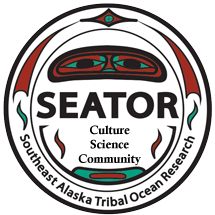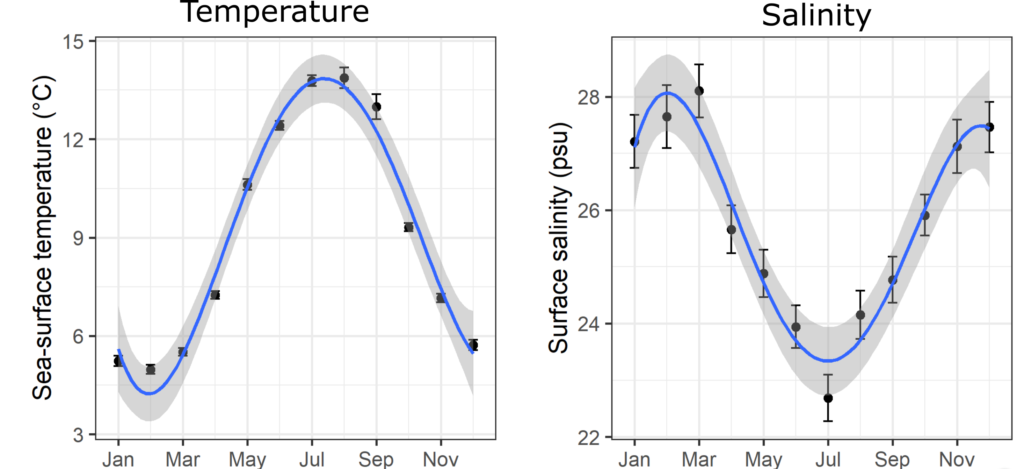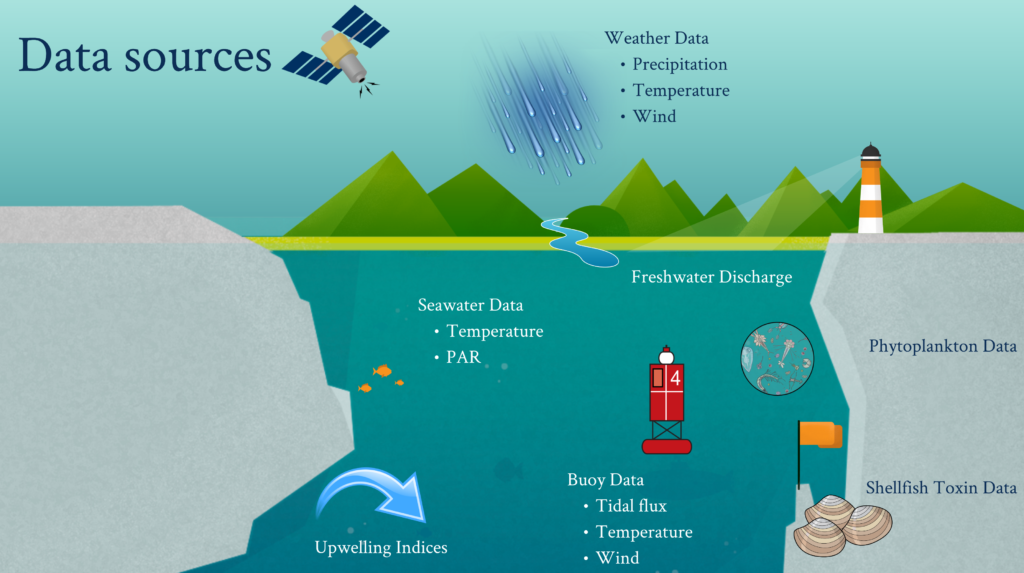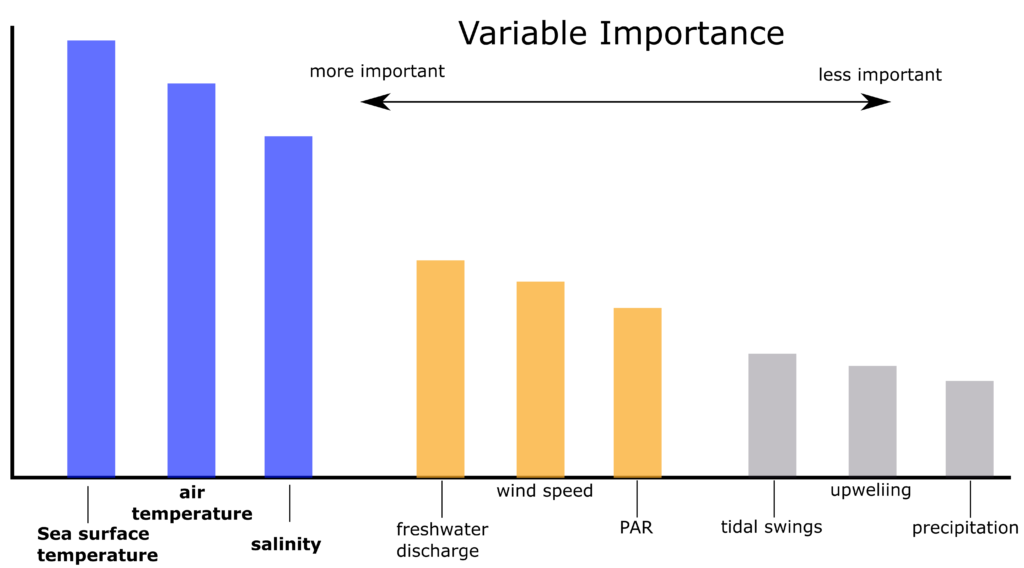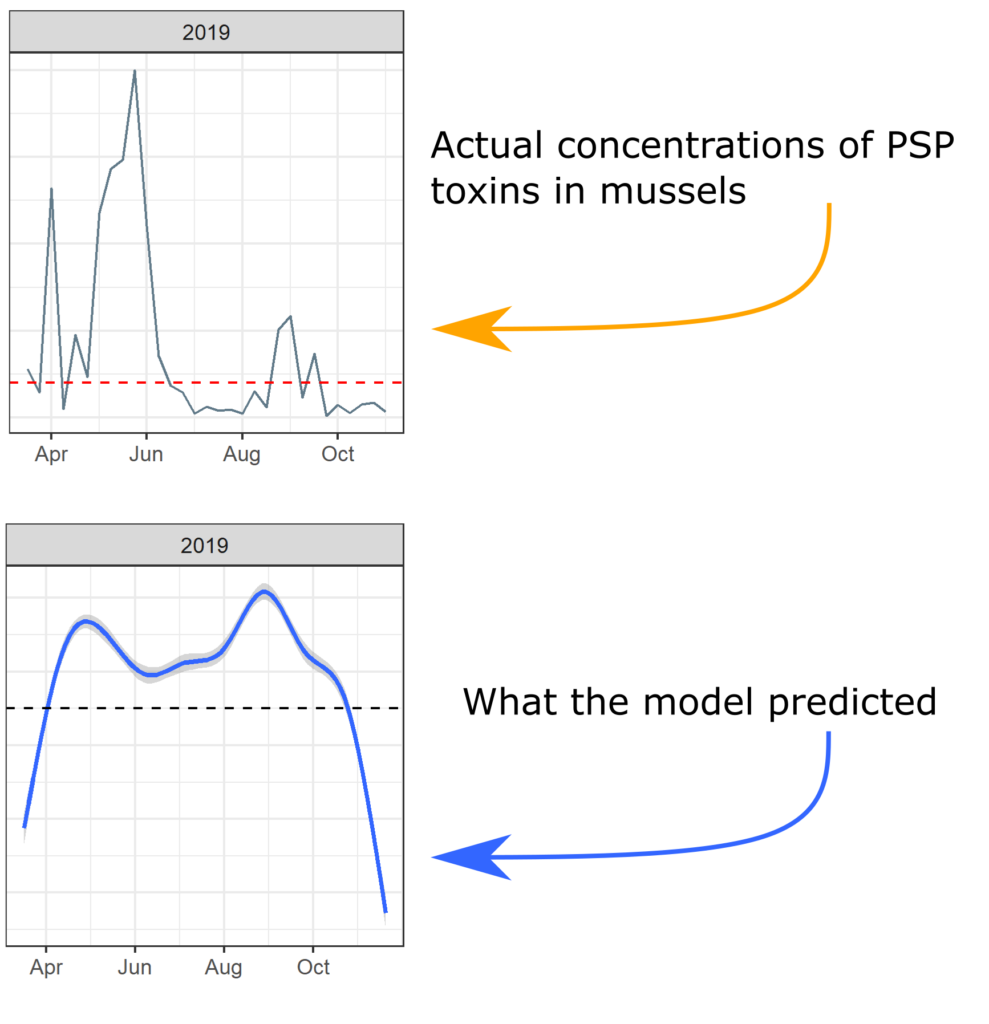Home > Research Projects
Research Projects
SEATOR partners and STA-ERL have generated unique and extremely important datasets containing phytoplankton observations, sea surface temperatures, salinity measurements, and paralytic shellfish poison (PSP) toxin concentrations in several shellfish species. One of the ongoing goals of the SEATOR program is to develop an understanding of what environmental conditions trigger harmful algal blooms (HABs). To do this, STA-ERL has partnered with several Universities and institutions to address environmental drivers of shellfish toxins. The results from these research efforts can be used to inform future forecast models and can be used in climate adaptation planning for food security to ensure access to subsistence resources.
Temperature, Salinity, and Alexandrium
The data that have been collected by SEATOR represent some of the most extensive ocean observation efforts in Southeast Alaska. Using hand-collected surface water samples, nearly 2,400 observations of salinity and temperature have been recorded by SEATOR partners. Both salinity and temperature display a seasonal pattern: sea surface temperature (SST) is highest in July due to the warm air temperatures and lowest in January and February. Salinity displays the opposite pattern – the ocean in Southeast Alaska is typically saltiest (highest salinity) in the winter time when storms bring up salty water from the deep ocean, and least salty in the summer when rain, snowmelt, and glaciers deposit large amounts of freshwater into the ocean.
Phytoplankton observations also display a seasonal pattern. For instance Alexandrium, the dinoflagellate responsible for producing PSP toxins, is more often observed in the summer months and less frequently observed in the winter months. However it is important to note that Alexandrium has been observed in every month of the year at several SEATOR community beaches.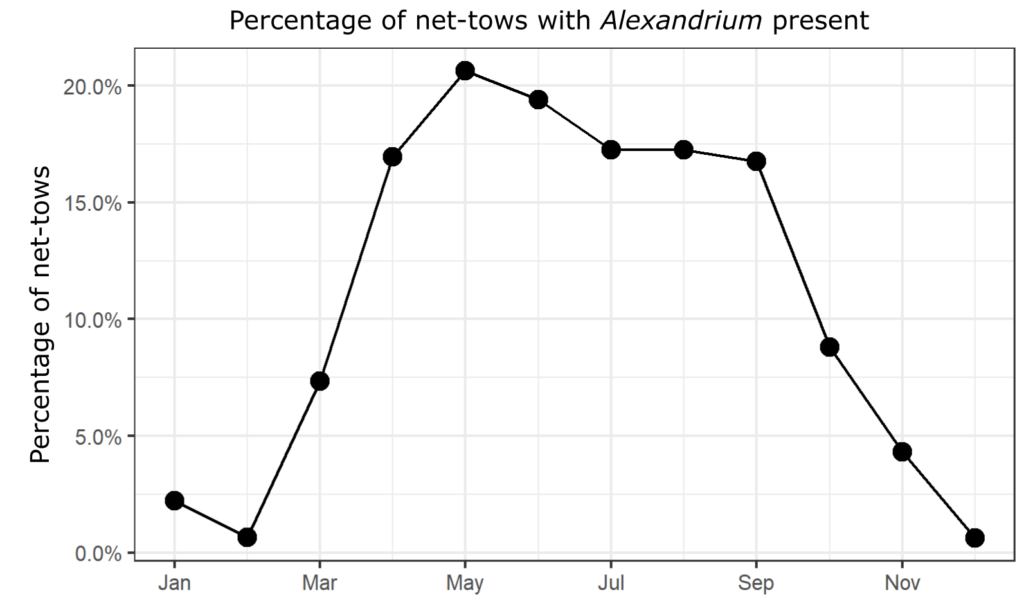 Thanks to a collaboration between the Sitka Tribe of Alaska, SEATOR, and the University of Alaska Southeast the data presented above has been published in a journal article. You can find the article here, or contact John Harley to receive a copy.
Thanks to a collaboration between the Sitka Tribe of Alaska, SEATOR, and the University of Alaska Southeast the data presented above has been published in a journal article. You can find the article here, or contact John Harley to receive a copy.
Environmental Drivers of HABs
HABs are caused by a complex interaction of water temperature, sunlight, nutrient availability, and salinity. It is often difficult to predict when and where conditions are going to favor a bloom of Alexandrium that produces PSP toxin. By gathering data collected by SEATOR partners and environmental data from NOAA, NASA, and USGS, we were able to expand our investigations to include other variables about the marine and terrestrial environments. These variables include photosynthetically available radiation (PAR), precipitation, air temperature, wind speed, tidal flux, upwelling, and freshwater discharge.
Key Environmental Drivers
Using the environmental data and shellfish toxin data collected from SEATOR partners we created a computer model that attempted to forecast when HABs might occur in Southeast Alaska communities. The model found that the most important variables for predicting HABs that produce PSP toxins in Alaska are SST, salinity and air temperature – all of which are data that have been collected by SEATOR partners.
Specifically SSTs between 8°C (46F) and 13°C (55F) and salinity values between 24 and 28 have been associated with PSP toxin producing HABs in Southeast Alaska. These numbers are close to ranges seen in regions like Kachemak Bay (Southcentral Alaska) and Puget Sound (Washington).
The model was able to predict the timing of blooms in some cases, but it was not perfect. One major problem is that it predicts high concentrations of PSP toxin throughout the summer, when in reality we generally see a drop in toxin concentrations in blue mussels following the initial spring bloom in May or June. This research was published in a scientific journal, you can find the article here or email John Harley for more information.
See the data
Using the application below, you can view the data that was collected by SEATOR and researchers from UAS and STA. The PSP toxin concentrations are given for blue mussels, and the environmental data is obtained from SEATOR, USGS, NOAA and NASA.
Further Reading
A report for SEATOR partners has been created with more detailed information on these projects. You can find a PDF of this article here.
Questions/Contact
If you have any questions about this research, please ask! Click Contact Us for more information.
John Harley, University of Alaska Southeast
Allison Bidlack, NOAA
Kari Lanphier, Sitka Tribe of Alaska
Naomi Bargmann, Sitka Tribe of Alaska
